How Profitable Can a Glamping Business Be?
Are glamping businesses really as profitable as they seem? What makes them different from other kinds of vacation rentals?
The truth is, the glamping and unique vacation rental world is filled with lots of potential for savvy property managers. If you know the basics of managing a vacation rental, you can absolutely create a profitable glamping business with opportunities to scale and impressive ROI in only a year or two.
Want more details about the profitability of glamping businesses? This article will dig deep into that as well as feasibility, budgeting, and tips on maximizing revenue while minimizing expenses, so let’s begin.
Want to streamline your glamping business?
Is glamping profitable?
When set up correctly, you can recoup your initial investment in a glamping business in as little as six months. After that, your business will become profitable and you’ll be well-positioned to start scaling.
The main reasons glamping is such a profitable business include the following:
- Glamping has relatively low start-up costs when compared with fixed property businesses. Think, a $20,000 initial investment per unit when compared with hundreds of thousands of dollars. That means you’ll have a quicker ROI and start bringing in profit much sooner.
- Glamping is growing in popularity. The global glamping market is currently valued at $2,348.7 million globally and is projected to keep growing with a compound annual growth rate (CAGR) of 10.9% over the next decade. North American and European glamping market sizes are particularly impressive.
- Glamping provides limitless possibilities to creative entrepreneurs. The great thing about glamping is that it can truly be set up in any setting and the only limit is your imagination. There are tons of different glamping types ranging from cabins to a-frame tents to boats to treehouses, so it’s easy to cook up a unique business idea with a little creativity.
An overview of the outgoings of a glamping business
One of your key goals when putting together your glamping business plan should be determining how long it will take for your unique vacation rental to be profitable. To figure that out, you’ll need a clear understanding of how much your glamping business will cost to run on an ongoing basis. Here are some of the big areas to consider:
Start-up costs
Tiny homes are on the higher end of start-up costs, but they’re easy to rent out year-round and require less maintenance than tents.
One of your largest glamping start-up costs will be buying or building your glamping property’s actual structure. Here are some examples of typical initial expenses, though prices vary depending on what kind of unique vacation rental you’re setting up, as well as the unit size, materials you use, and specific features you add:
- Bell tents: Range between $2000 and $5000
- Sheds or tiny homes: Range between $4000 and $6000
- A-frame tent kits: Range between $8000 and $10,000
- Treehouses: Start at around $15,000, minimum
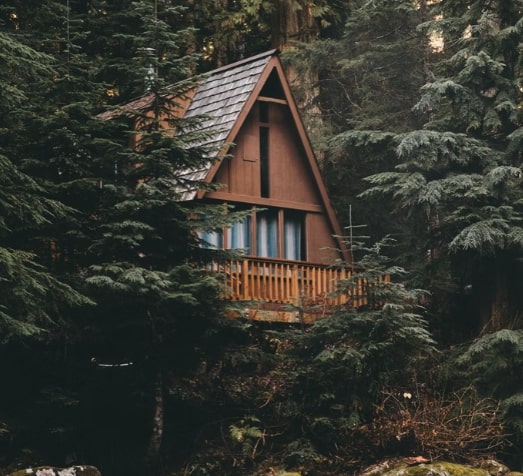

It’s also important to consider the unique challenges and opportunities different kinds of glamping sites present. For example, bell tents are one of the most affordable structure types to set up but require a lot of climate control year-round, have short lifespans, and can present security issues.
On the other hand, tiny homes and treehouses require more of an investment upfront but last longer when maintained properly, and lend themselves to security solutions like smart locks.
When figuring out your start-up costs, be sure to include all your initial expenses to create an accurate budget. Include all of the potential costs associated with:
- Buying or leasing the property where your glamping site is located
- Setting up utilities like electricity, plumbing, water, and gas
- Obtaining necessary licenses, permits, and insurance
- Buying linens like bedding and towels
- Investing in furniture, both indoor and outdoor
- Choosing decor
- Ordering signage
Marketing
Depending on how you choose to market your glamping business, you may have regular costs arising from your strategy.
If you mostly depend on vacation rental platforms like Airbnb, it’ll be free to post your listing. However, they take around 3% of the overall value of your bookings for payment processing, so you’ll need to keep that in mind when you figure out your nightly rates.
If you decide to build your own direct booking website, you’ll have to factor in the costs and/or time associated with:
- Set-up
- Development
- Graphic design
- Hosting
- Maintenance
- Updates
Likewise, marketing strategies like posting on social media accounts like Facebook, Instagram, and Tiktok are free in theory, but if you need to hire someone to be responsible for that or want to pay advertisements, you’ll have to add those expenses into your budget as well.
Last, email marketing is a great way to stay in touch with your loyal guests and nurture relationships with leads who haven’t made a booking yet. Popular email service providers like Mailchimp and Mailerlite have free plans, but depending on how many contacts you have and the features you want to use, you may have to pay for your subscription.
Ongoing operational costs
Having an accurate breakdown of how much your glamping business will cost to operate on an ongoing basis is essential. That way, you’ll be able to determine approximately how much profit you’ll be taking home after expenses once everything is up and running.
It can cost as much as 20% of your revenue to simply restock your units and pay for your utilities, so it’s essential to factor these kinds of basic ongoing expenses into your financial plan.
Here are some of the most important operational costs to keep in mind when thinking about budgeting:
- Cleaning, laundry, maintenance, and repair services: Most glamping businesses add additional fees to their nightly rates for cleaning services, but these kinds of expenses add up fast. While you will need to determine your approximate cleaning costs per month, you can streamline your cleaning and maintenance processes with software like Operto Teams to help save you money.
- Staff: As your glamping business grows, you’ll naturally need to hire more staff and consider the increasing related costs. But with the right automation solutions, your recruiting, staffing, and operational expenses will go down, relative to the number of units and generated revenue—see how Operto minimizes dependency on staff, which enables businesses to scale up without adding to the headcount.
- Insurance, permit, and licensing costs: Most glamping businesses have to pay for insurance on an ongoing basis. In addition, permits and licensing have to be renewed regularly.
- Extras: You truly never know when you’ll need to buy something new for your glamping business. You may realize that guests want items like cribs or high chairs for their children or kitchen supplies to cook quick-and-easy meals. It’s a good idea to include a buffer in your budget for these kinds of expenses.
- Software and computer systems: If you only have one glamping site, you might be able to get away with ad hoc solutions. However, most glamping industry professionals want to scale their business and build multiple units to maximize their potential profits. To do this while saving yourself time and money, invest in intelligent vacation rental software like Operto Guest and Operto Teams. They’ll streamline everything from your internal planning to your guest relationships, creating a better experience for everyone involved in your glamping business.
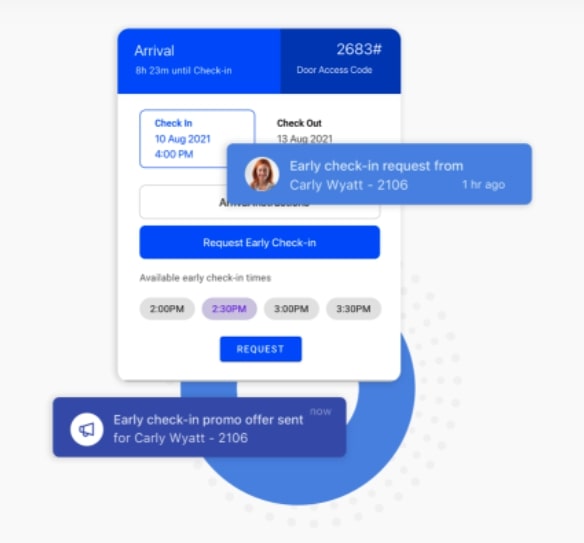


Why you should focus on glamping site feasibility?
Put simply, determining your glamping site feasibility tells you whether your business idea is worthwhile.
By studying feasibility, you’ll figure out:
- How difficult it’ll be for you to get your glamping business up and running
- The kind of revenue you can expect
- How long it’ll take you to pay off your initial investment
- How much competition there is in the area
Glamping site feasibility is important because it’ll tell you if you should pursue a certain glamping business idea or go back to the drawing board and think of a new concept.
You’ll become aware of potential roadblocks and obstacles before you actually face them, saving you time, money, and frustration down the road. You can preemptively think of solutions to problems you know will arise in the future, or decide that certain potential issues simply aren’t worth the risk.
Here are some of the main questions you should ask yourself when considering the feasibility of your glamping business idea:
- Licensing and permissions: Do I need to obtain a license or special permission to set up my glamping business? If so, what process do I have to go through to get them? How long will the process take? Is my application likely to be approved?
- Basic utilities and safety: Does my potential glamping site have access to electricity, gas, plumbing systems, and water? If not, how difficult would it be to set up those utilities? Are there any security hazards associated with my glamping site? If so, how serious are they and how can they be minimized?
- Competition: How many similar glamping sites are there in the geographic area I’m looking at? What kinds of amenities do they offer and what can I do to make mine competitive?
- Revenue potential: What are my estimated initial set-up costs? How much am I planning to charge per night? Will I be able to do business all year round or only during the high season? How long will it take me to earn back my initial investment and become profitable?
- Future planning: How long will it take to build my glamping site and start renting it out? What are the steps I’ll have to go through to set myself up for a successful business launch? What special opportunities do I have and what problems am I likely to encounter?
Ways to minimize expenses and maximize revenue
To make sure your glamping site becomes profitable as quickly as possible, you can put into practice these strategies to keep your expenses low while getting your business off the ground:
Use digital guidebooks to improve the guest experience
Digital guidebooks are fantastic because they not only free up time and save on labor costs for hosts and property managers, but they also enhance the guest experience.
Put simply, digital guidebooks act as virtual concierges. They’re online resources that provide guests with all the information they need about your glamping property to have an excellent stay, including:
- Arrival information like transportation options, directions, digital check-in instructions, and unique access codes
- Departure information like check-out times and pre-departure checklists
- House manual with details about wifi, air conditioning, thermostat, kitchen appliances, general rules, and other house amenities like pools, jacuzzis, hot tubs, and BBQs
- Food and drink recommendations like nearby grocery stores, top-notch restaurants, fun bars, and cozy cafes
- Activity recommendations like parks, beaches, landmarks, excursions, shopping, and other local attractions
You can use Operto Guest to create customized digital guidebooks that’ll add an element of convenience and ease into your guests’ getaways. The software also has other capabilities that help make guest communications easier, like in-app messaging, automated host replies, and how-tos that answer questions before they’re asked.
Keep your operations team small at the beginning
Many glamping businesses start with just one or two units when they’re getting started. That way, they can keep their set-up costs low, get the hang of day-to-day operations, and perfect the way they design their glamping sites. Once their first units are running smoothly and getting a healthy influx of bookings, they start thinking about expanding.
If you’re starting a glamping business with just a unit or two, a great way to keep costs low is by sticking with the smallest possible operations team. Some entrepreneurs choose to run their glamping businesses by themselves at the outset, right down to checking people in and cleaning units. While that’s certainly a cost-saving option, it’s a lot of work, so you’ll have to be prepared for that.
If you do choose to hire people, start with the basics. Hire a couple of property managers to manage bookings, get guests settled in, and help with marketing. You’ll also want to hire a reliable cleaning team and maintenance workers on a casual basis.
Investing in hotel automation software early on in your glamping business journey will streamline your day-to-day operations. When your operations team works more efficiently, you don’t have to hire as many people and can keep your costs lower. Solutions like Operto Teams can streamline everything from task scheduling to reporting.
Conduct thorough research at the outset
If you don’t live near your potential glamping business property, make sure you become deeply familiar with the area through research. If you can, we’d recommend staying there yourself so you have first-hand experience with the environment your business will be operating in.
This step is crucial because a detailed understanding of your glamping business’s geographic location lets you preempt issues that could lose you money down the road.
Let’s consider two relevant examples:
- Weather: Depending on where your potential glamping site is located, you might have to deal with a demanding climate. Be sure to research the likelihood of extreme weather events like drought, heavy rainfall, floods, and snowstorms in your area. Detailed knowledge of the climate that surrounds you will help you figure out your high season vs low season, determine whether you can operate all year round, and inform the kinds of building materials, furniture, amenities, supplies, and storage solutions you invest in.
- Local infrastructure: Many wild or remote areas have various issues with transport links, power supplies, and connectivity—roads become flooded, electricity cuts out, different network services go down. Being prepared for these eventualities mean you can make the best choices on how you power your site, maintain communications, and improve safety.
Make a glamping business profit in months
Glamping presents an exciting business opportunity because it requires a very low initial investment when compared with fixed property businesses. That means glamping business owners can recoup their start-up costs and become profitable in just a few months.
If you’re interested in starting a glamping business and wondering how much profit you could potentially make, it’s a good idea to study the experiences of other people in your industry. Let’s consider a tiny house near the Great Smoky Mountains as a case study.
Andres and Chelsea sold their rental properties in Arizona to make their dream of owning a successful glamping business a reality. They ended up setting up a renovated glamping shed on their property in Tennessee and calling it the English Creek Hideaway.
All in all, the start-up cost of Andres and Chelsea’s tiny home was $25,000. The actual shed structure cost $5000 and they spent another $20,000 renovating it, including building a patio and outdoor shower and buying everything from furniture to appliances to linens.
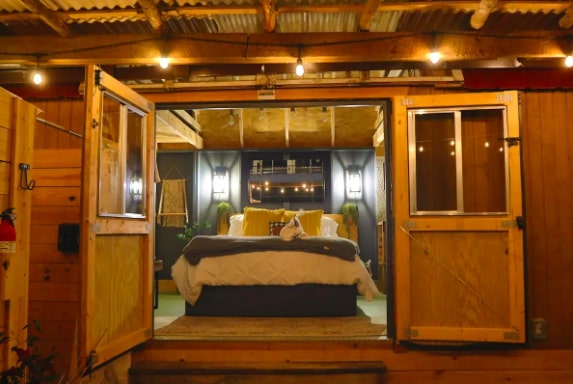


Andres and Chelsea opened for business in autumn 2021 and were pleasantly surprised by how much revenue they brought in right off the bat. They charged between $115 and $145 nightly and, except for a few cancellations, were fully booked for October and November 2021. They mainly got their bookings from Airbnb and Vrbo.
They made $9377 USD in profit in October and November 2021 alone.
Conservatively, that means they’ll be able to pay off their initial investment within just five or six months. After that, they’ll be making pure profit. They’re already planning to expand their business and build more glamping units on their property.
Ready to make your glamping business idea a reality?
All in all, the glamping industry offers a wealth of business opportunities. Glamping businesses don’t require a lot of money to set up when compared with more traditional vacation rentals, and they’re quick to become profitable once they’re up and running.
Of course, you’ll have to be smart about start-up costs, recurring expenses, the feasibility of your business idea, maximizing your revenue, and using tech for optimal guest experiences and efficiency—but when you do that, you could have a thriving business in your hands in a matter of months.
Get ready to join the array of successful glamping businesses out there.
Glamping business profit FAQs
Is glamping still popular?
Yes, glamping is still very popular. The global glamping market is currently valued at $2,348.7 million and is expected to keep growing with a compound annual growth rate (CAGR) of 10.9%. The two largest glamping markets are in North America and Europe but there are lots of opportunities all around the world.Some of the driving forces behind glamping’s popularity include the ever-growing tourism industry, a rise in disposable income and increased willingness to spend it on unique experiences, more ethical consumerism, and heightened consumer awareness of glamping.
What is the average price of a glamping experience?
Glamping experiences range a great deal in price depending on location, property size, amenities, and site quality. A canvas tent for two in an off-the-beaten-path location certainly won’t cost the same per night as a tiny house for six next to a national park. However, average glamping experiences typically range between $150 and $300 per night in the United States, with higher rates on weekends, holidays, and during the high season.How does Airbnb profit from glamping?
Airbnb makes a profit from all kinds of listings (glamping, unique vacation rentals, rooms, apartments, and houses) by charging fees to both hosts and guests. It’s free to list a property on Airbnb, but they’ll take around 3% off your booking total for payment processing and charge your guests another 6 to 12% in fees.What are some other popular glamping sites?
While Airbnb and Vrbo are two of the most popular sites to search for unique vacation rentals, there are lots of other options out there. Here are some other big names in the industry right now:
- GlampingHub
- HipCamp
- FlipKey
- CoolCamping
- Booking.com
- Glamping.com
What are some of the benefits of glamping?
Glamping comes with lots of benefits for both hosts and guests. Guests love glamping because it’s a great way to connect with nature and enjoy some tranquility with all the comforts of home. Rather than dealing with the stress associated with old-fashioned camping and all the supplies and unpredictability associated with it, they can spend time in the great outdoors with minimal work necessary on their part.On the other hand, hosts enjoy setting up glamping businesses because they love providing people with unique, memorable experiences. The glamping industry is also a growing market with low initial investment requirements and lots of revenue potential, making it a great option for savvy vacation rental professionals.
More Articles
Want an operations tool that’s smooth and flexible?

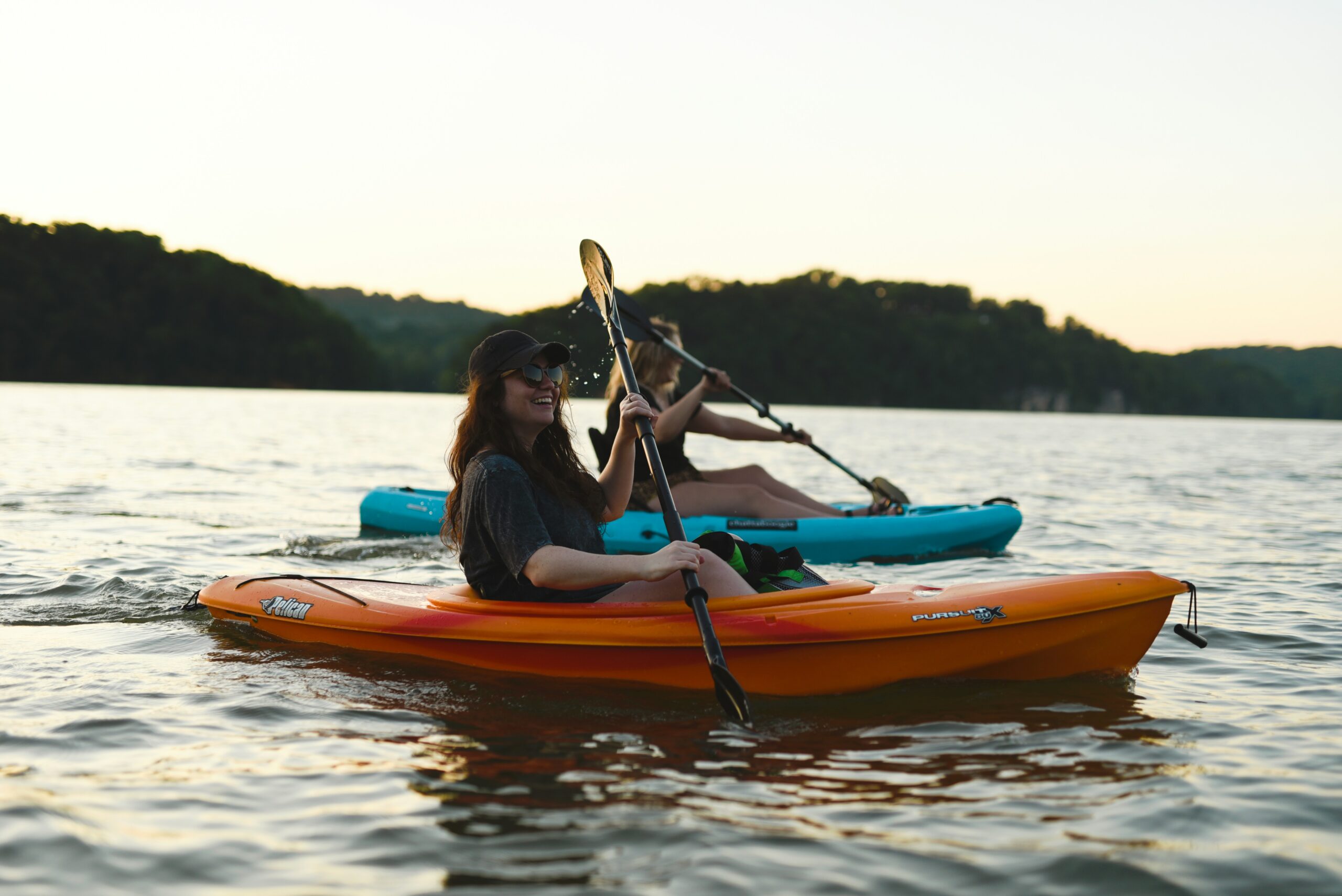
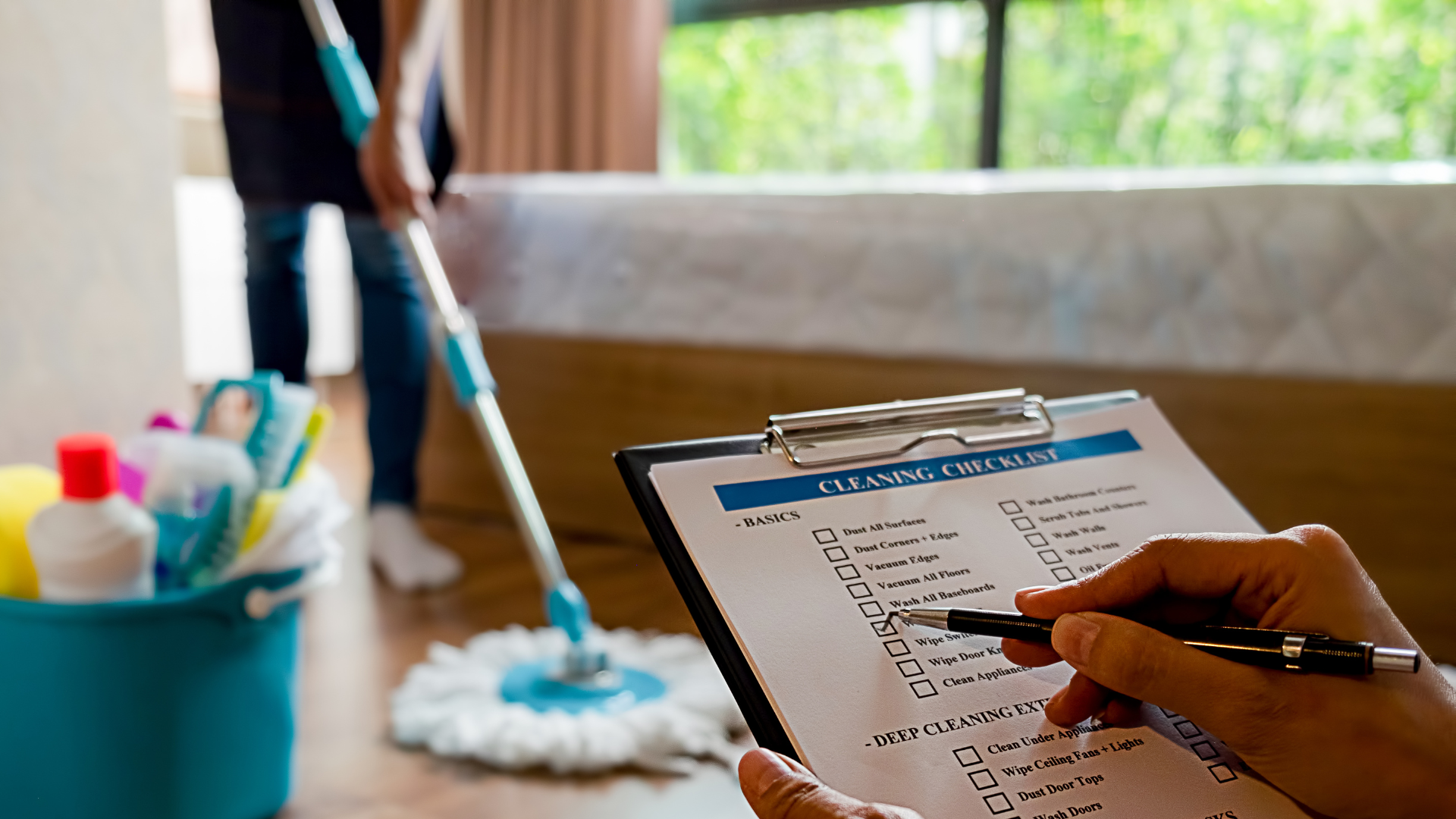
![5 Steps to Scale Your Vacation Rental Business [2024]](https://operto.com/wp-content/uploads/2022/11/shutterstock_1575539170-scaled.jpg)